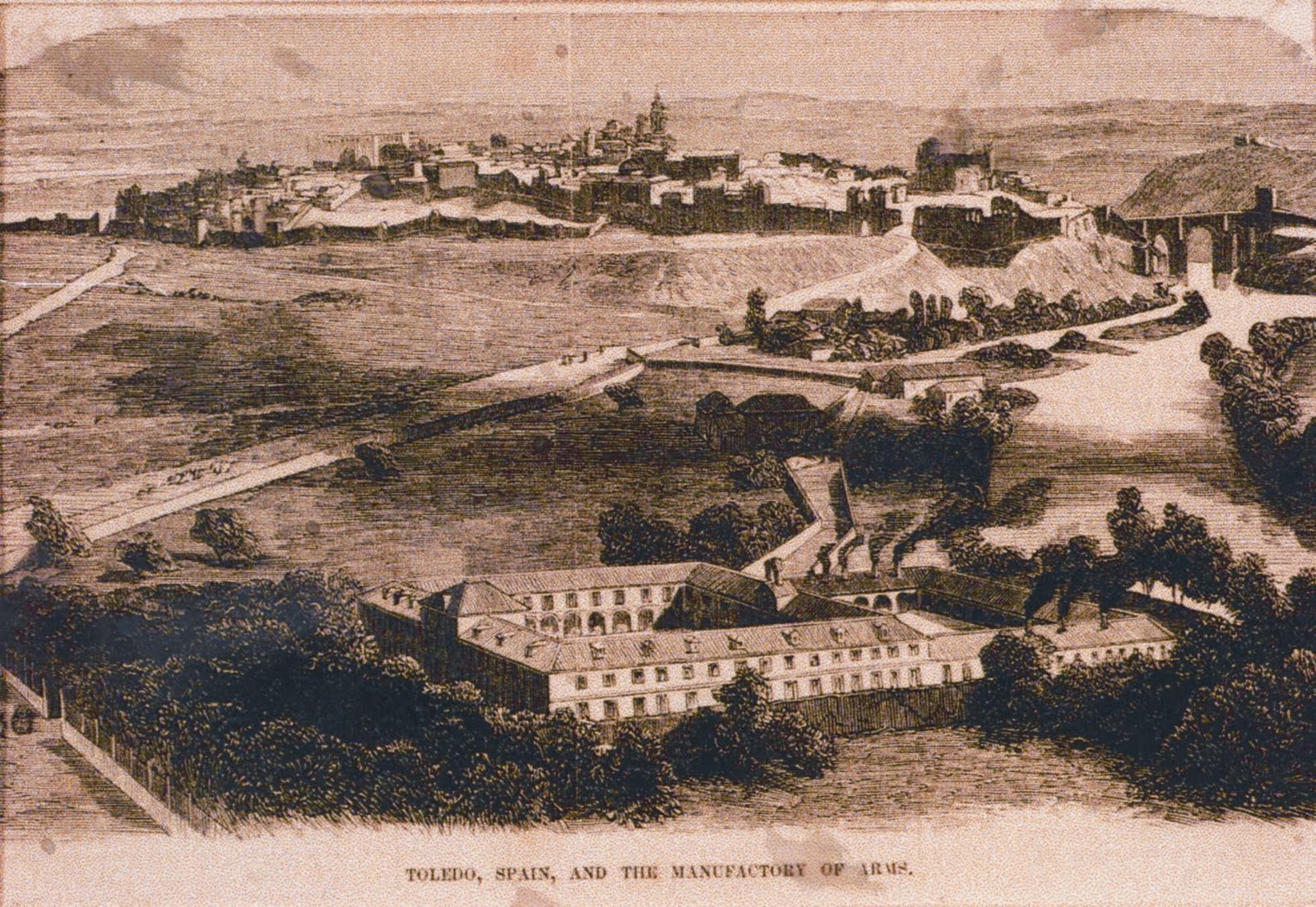Although Toledo is a well-known city, few know just how famous and important it used to be a couple of centuries ago. Today Toledo is famous for its art and Damascus gold decoration known as Damascene but before firearms were invented Toledo was the centre of the world for forging metals and more specifically sword making. The fame of the master sword smiths from Toledo lay in their unrivaled skill in tempering steel, a unique art form that no one was able to copy. Steel from Toledo has been considered the most prestigious in the world ever since the V century, mainly due to its characteristic flexibility and strength, which was later employed in fencing. For centuries Toledo lead the world in sword making and for centuries they managed to keep their “trade secrets” within the family. The master sword smiths jealously guarding their “Secret of Temper”, only passing it on to their children, who in turn guarded the secret and passed it on from generation to generation, making Toledo steel the most sought after steel for centuries. It was later discovered that the master sword smiths each had their own very characteristic formula. These formulas were the secrets of their trade and were never written down. Instead each master converted his “secret” into a series of songs or prayers, and the rhythm of the song or the speed of the prayer and its repetitions marked a specific time frame which enabled them to accurately measure how long the sword should be immersed in water to reach an optimum “temper”. The songs, verses and prayers which marked each stage of the process were either hummed or sung in silence so no one would be able to steal their secret. But at the same time they were easy to recite in exactly the same way every time they produced a sword, leaving no margin for error.
The Toledo sword is one of Spain’s oldest traditions. Back in the V Century, the Iberian Sword Smiths forged swords know as ‘Falcatas’ which had a special sheet of iron forged into its interior and a special design that increased its strength and made it easier for the swordsman to use his sword in fast swift actions. The fame of these swords was widespread and were even chosen by Hannibal for all of his army and when discovered by the Romans they armed all their legions with these unique swords. As time moved on they further improved their techniques and the art form developed. Later in the X Century, even the Muslim soldiers feared the Toledo sword after being defeated by El Cid Campeador and when they discovered that these swords originated from Toledo they didn’t waste any time and stole some of their techniques to make their very own two edged swords known as ‘Scimitars’. As time moved on the sword smiths from Toledo also manufactured the famous ‘Rapiers’, so well popularised by the French Musketeers.
.jpeg) Scimitar
Scimitar
.jpeg) El Cid's Sword
El Cid's Sword
.jpeg) Rapier
Rapier
The internal structure of the blade and their mysterious technique of forging at the same time hard steel, at very high temperatures, with softer steel which had a high proportion of carbon, enabled them to produce a unique sword that was unparalleled in strength and maneuverability. Kings and noblemen from all over the world commissioned swords and sables from Toledo. Even well known Japanese Samurais who discovered this technique through the Spanish merchants were known to travel to Toledo so they would forge their Katanas and Wakizashis for them as Japan was in a constant state of civil war. Unfortunately today this art form has practically disappeared. The correct choice of materials, in the correct proportion and working at a temperature of 1454ºF for exact intervals of time delivered what is still believed to be the most perfect sword ever made. Artisans from all over the world have tried to imitate this quality but to this day no one has achieved it.
However one person did recognise the importance of keeping alive this tradition and when the predominance of firearms came around in the XVII Century initiating the decline of this treasured craft, King Carlos III of Spain decided to create the so-called "Sword Factory" in Toledo in 1761. The birth of this factory was to guarantee the survival of the Toledo sword smiths as its first and most important customer was to be the Royal Artillery. From that point on all swords were marked with the inscription "Artillery Factory of Toledo".

What distinguishes swords made in Toledo is that the blades are not made of pure steel, but rather composed of an interior core of iron, completely covered in steel. With this process, the steel is given more elasticity and hardness plus the ductility of iron. Before a blade was approved, it was subjected to a large number of tests, the most important ones were known as ‘the cane’, ‘the test of iron’ and the "S test". Luxury arms, as well as having the mark of the sword smith or factory, were also decorated using different systems such as damascened finishes, gold or silver-plating, enameling and engraving. The oldest technique is enameling. In the different workshops in Toledo one can admire magnificent reproductions of swords and sables as famous as those of: Alfonso VI, Boabdil (Mohammed XII), El Cid, Napoleon, Carlos V. Despite having ceased sword-making activity in the ‘Arms Factory’, Toledo workshops continue to produce sables for the Spanish army and some foreign ones too.
Ver mapa más grande
BEST TIME TO VISIT : ANY TIME OF YEAR